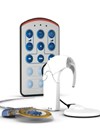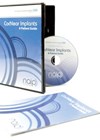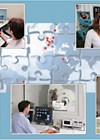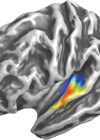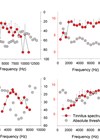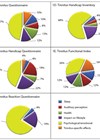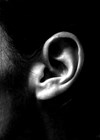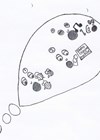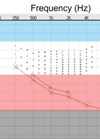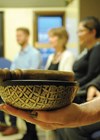Audiology features archive for 2017
Auditory brainstem implant results in adults and children
Background The auditory brainstem implant (ABI) has been developed from cochlear implant (CI) technology and is indicated for people who have anatomical abnormalities of the cochlea or dysfunction of the auditory nerve. The majority of people who have received an...
Music and cochlear implants
Introduction The introduction of multichannel cochlear implants (CIs) in the early 1980s provided children and adults with severe and profound hearing losses with greatly improved speech perception skills. In this paper, however, I am going to focus on an area...
Access to and uptake of cochlear implants in the UK
Assessing demands on cochlear implant (CI) services is very important for both commissioners and clinicians in anticipating clinical need and funding requirements. Commercial CI’s were introduced in the late 1980s. Initial funding was from charitable sources. The first major advance...
Cochlear implant referral: how can we do better?
Considerable progress has been made over the last few years in improving access to cochlear implantation (CI) in the UK for children and adults with severe to profound deafness. But we are still not treating children early enough, and we...
European funding for the tinnitus research network TINNET
Over 70 million people in Europe experience tinnitus, and for seven million it creates a debilitating condition. Severe tinnitus is often associated with depression, anxiety and insomnia, resulting in an enormous socio-economic impact [1]. It has been estimated that 13...
What does functional neuroimaging tell us about tinnitus?
One of the most common causes of tinnitus is noise exposure, be that either cumulative day-to-day exposure over a lifetime or experience of acute noise trauma such as a loud concert or shooting incident. Observational data indicate that up to...
Measuring the pitch and loudness of tinnitus
Matching the characteristics of tinnitus Many researchers and clinicians have explored the subjective nature of tinnitus by asking people with tinnitus to adjust a sound so that it matches their tinnitus in some way. This can be useful both for...
Questionnaires to measure tinnitus severity
The handicap associated with tinnitus can arise from any combination of stress, anxiety, depression, emotional distress, insomnia, difficulties concentrating, or impairments in quality of life or everyday functioning. Measuring such handicap and determining clinical need is therefore far from trivial....
Intratympanic treatments for subjective idiopathic tinnitus
Direct application of medication into the ear is long established, going back as far as written records. In the modern era, greater understanding of aural anatomy revealed that drugs instilled in the middle ear could potentially diffuse into the cochlea...
Drawing pictures and telling stories: treating tinnitus in childhood
There is increasing awareness that tinnitus is not restricted to adults. Indeed, the available evidence suggests that some experience of tinnitus in children is fairly common [1]. For many, tinnitus has little effect and requires limited or no intervention. For...
Selecting and optimising hearing aids for tinnitus benefit: a rough guide
Hearing aids have a relatively long history as tinnitus treatment tools. Saltzman and Ersner reported success in suppressing tinnitus with simple hearing aids in a number of cases as early as 1947 [1]. In an early comprehensive approach to tinnitus...
Mindfulness based approaches to tinnitus management: meditations on a new approach
Psychological approaches to tinnitus There is now widespread agreement that an individual’s interpretation of tinnitus can determine how distressing they find it. If tinnitus is regarded as non-threatening then habituation normally follows. If, however, tinnitus is interpreted as threatening, habituation...


